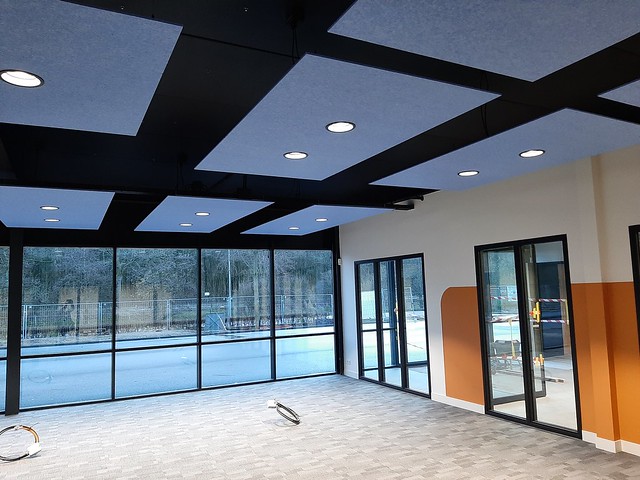The Benefits of Using a Forming Machine
Metal forming is an essential process in the creation of many everyday products. It is also crucial for larger scale projects, such as building construction and car manufacturing.
A roll forming machine bends long strips of metal, typically coiled steel, into specific configurations. It does this by powering the material through successive sets of rollers, each set bending the metal a little more than the last.
Types
There are four basic types of metal forming machinery, and each one has its own distinct advantages. These include cost savings, versatility in design configurations and materials, and repeatable accuracy in production.
The first type of machine is a roll forming machine, which uses a series of rollers to shape long strips of metal into precise parts. It can be used for a wide range of applications, from furniture and appliances to telecommunications equipment and supports or frames for construction. The process starts with metal coils that feed into the machine, which then progressively bends them in each station. The number of bending stations and their size depends on the desired end product. For example, C-purlin steel frames are commonly made using this type of machinery, which makes the aesthetically pleasing metal truss frames needed to support roofs and walls.
Another type of machine is a punching and cutting machine, which cuts or shapes metal before it’s finished. This can reduce the amount electric fan supplier of time spent on manual work, as well as increase productivity and quality. This is particularly useful for large or high-volume production runs.
Brazing machines use molten braze filler to join two or more materials together. This can be done without adding heat, and is useful for joining dissimilar materials or alloys. Cold heading machines form metal blanks into shaped parts by ramming a punch through a preformed die.
Advantages
The applications of forming machines include manufacturing springs, metal machining, wire forming, and more. They are widely used in various industries because they offer a variety of advantages such as precision, speed, and versatility. In addition, they can produce large quantities of springs in a short amount of time, which helps businesses reduce costs and increase profits.
Metal forming is a highly versatile process that can create a variety of different shapes and sizes. It is particularly effective for making slender, linear metal components. For example, it can be used to produce the components of automotive transmissions and clutches. It is also a good choice for making small-volume, high-precision parts that require little finishing work.
A key advantage of forming is that it produces a finished product that is strong and durable. It can also be used to make complex shapes that would not be possible with traditional metalworking techniques. In addition, it is a cost-effective method because it minimizes waste material and requires less manual intervention.
Another benefit of forming is that it can be used to produce aesthetically pleasing custom designs. This can make the products more attractive to consumers, which can lead to higher sales and profitability for the company. It can also help manufacturers meet customer demands more quickly, which can improve overall business performance.
Applications
Metal forming machinery is used for a wide variety of applications. This equipment can create complex shapes with a high level of accuracy, electric fan company precision, and consistency. It also automates and streamlines production processes, which can save time and money. It is used in a number of different industries, including power plants, renewable energy systems, and heat exchangers.
A metal forming machine uses a series of rollers to shape flat long strips of metal into desired cross-sectional profiles. The process typically takes place at room temperature, and each successive set of rollers bends the metal a little more than the last. The process can be adjusted to accommodate a wide range of profiles, with some requiring many roller stations.
The bending process can be modified to produce different shapes and sizes of products, such as square or rectangular pipes. Depending on the material used in the bending process, different adjustments need to be made to ensure that it can be shaped effectively. The forming process also involves the use of cutting tools, which may need to be replaced after each operation.
To reduce costs, manufacturers can implement a maintenance schedule to help keep the machines running smoothly and efficiently. This maintenance schedule should include regular inspections and repairs. Additionally, it should include routine cleaning and lubrication of all components. This will prevent unexpected breakdowns and reduce costs.
Cost
Forming machines are cost-effective industrial equipment that can shape metal sheets into specific profiles. They can be used to create a variety of products, including C-channels, U-channels, Z-sections, roof panels, and door frames. The machine’s bending process uses consistent pressure and forming stations to shape the metal into the desired profile. The machines can also be equipped with additional features such as punching or notching capabilities, embossing units, and integrated packaging systems.
The price of a forming machine depends on several factors, including its size and capacity, material compatibility, and automation capabilities. In general, larger and more complex machines have a higher price tag than simpler models. They may also require a greater investment in specialized tooling and customization, which contributes to their overall cost.
Moreover, the price of a forming machine may vary depending on its manufacturer and reputation. Established and reputable manufacturers typically charge more for their equipment due to their quality and reliability. In addition, purchasing a second-hand machine or engaging in negotiations with manufacturers can help reduce costs without compromising quality.
Investing in maintenance and repair services can further lower the cost of a forming machine. These services help minimize downtime, ensure proper functioning, and extend the machine’s lifespan. Additionally, these services can help you maximize the return on your investment by reducing operating and material costs.



